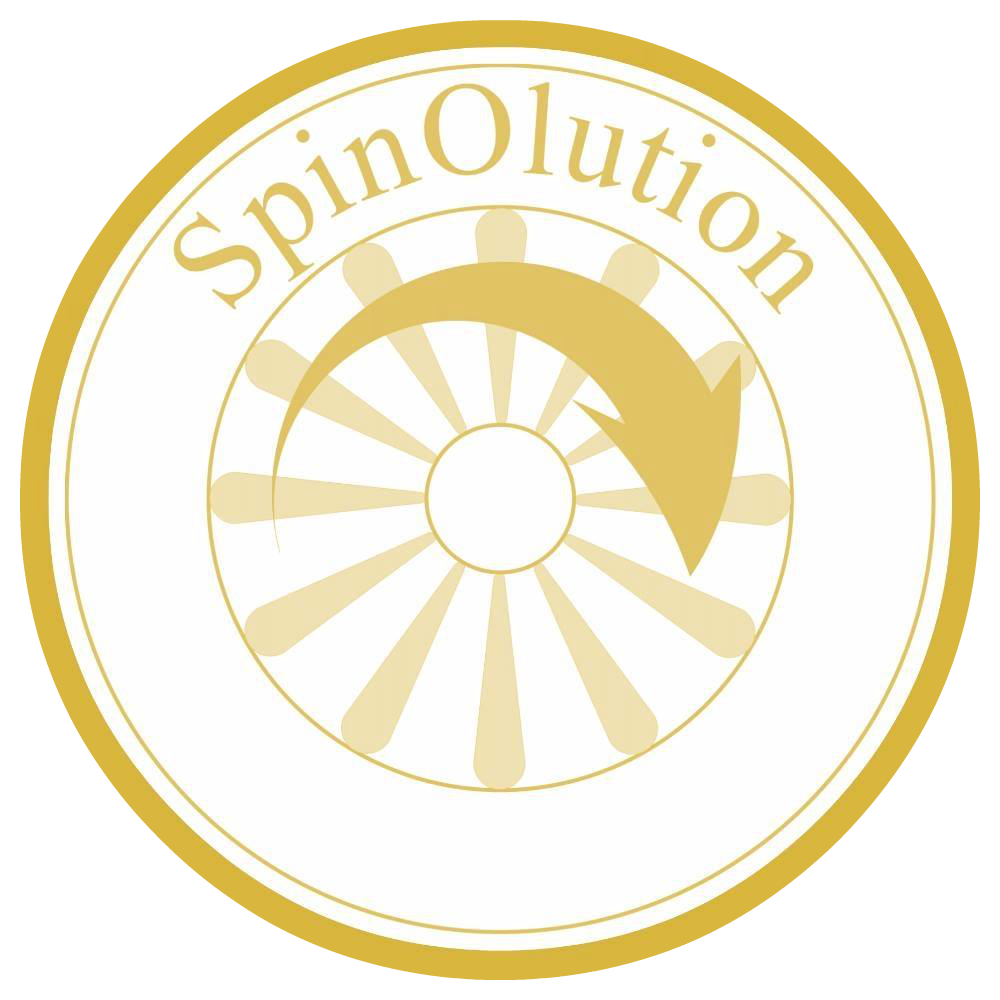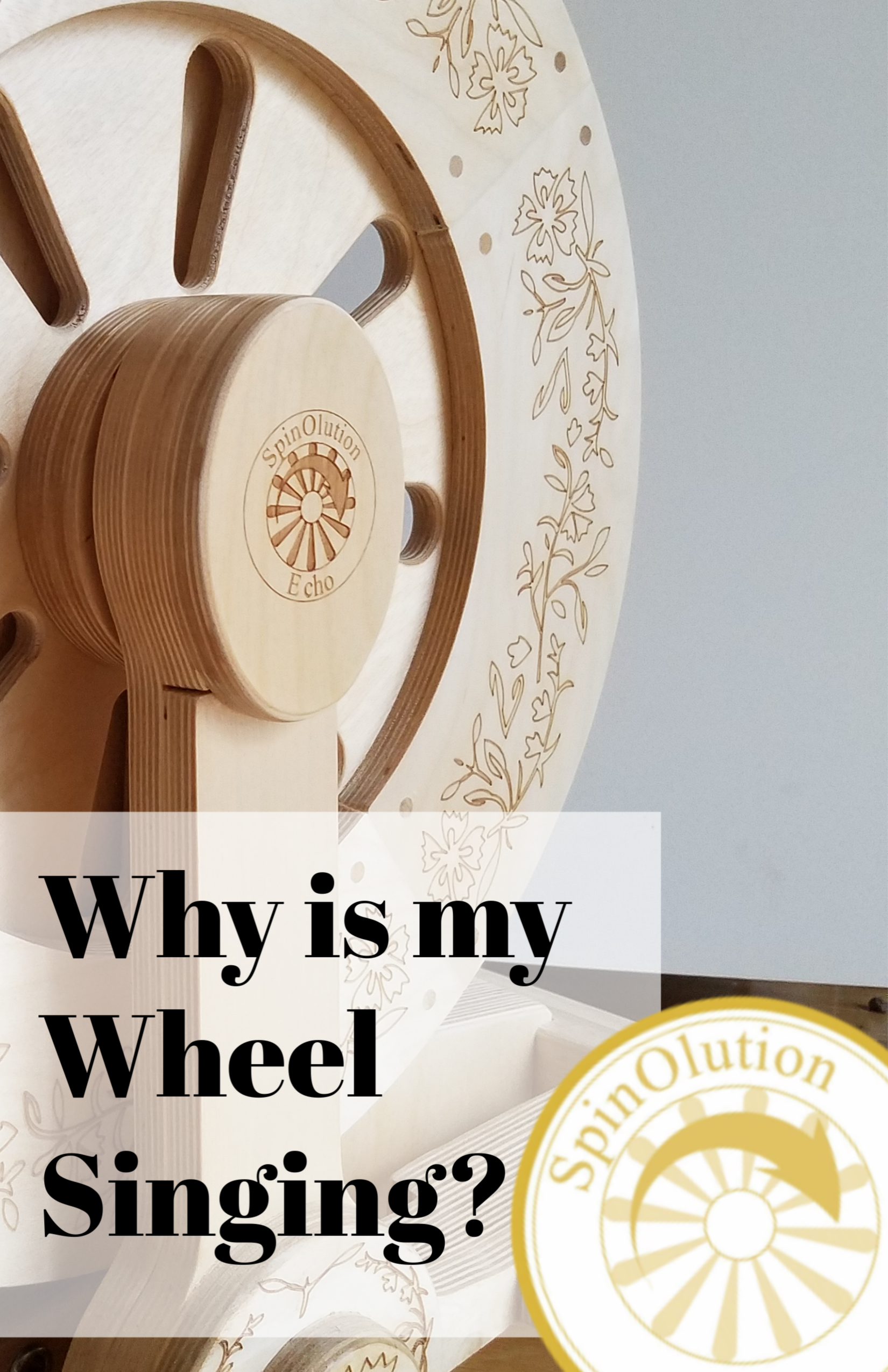I can't remember how to install my tension block, does the screw go up or down?
Tension / Uptake Tips and Troubleshooting
Introduction to Tension
For new spinners or spinners who are on a wheel that is new to them tension and uptake may be some of the first stumbling blocks. Thanks to the straightforward design of SpinOlution wheels and a few tips you should be able to quickly troubleshoot any issues.
Tension is the term to describe the strength of the wheel pulling the fiber from your hand as you spin while wrapping it onto the bobbin. For finer yarns or if you if you would like more time to draft then less tension would be prefered. If you are having issues with not having enough twist, your yarn not holding together or the yarn not being fed onto the bobbin then increasing the tension should help.
Clockwise rotation of the knob increases the tension, and counterclockwise rotation decreases it. Very minor adjustments are needed to fine-tune the tension - so only use partial rotations for the initial adjustment. Tension Blocks are Reversible! If your wheel starts squealing, rotate the block to silence the squeal before replacing the felt.
How it works: The brake knob screws onto a threaded rod; it pushes on a spring, which pushes on a nylon flange, which pushes on a wooden block. The wooden block goes into the head; on the curved inside edge there is a piece of felt. The block pushes on the rod that the bobbin rides on.
Finding Your Preferred Tension
Different spinners prefer different amounts of tension. Spinners who spin super-fine yarns and short staple fibers may remove the tension block completely.
Spinners who spin fine to worsted only need a small amount of tension to get the uptake they need. Spinners who spin chunky, bulky, or art yarn need a lot of tension.
If you have never spun before - it may take some time to find that “sweet spot”
Tension Tips
➔ To set: Start by twisting the knob until there is no pressure on the spring resting on it, so that any more clockwise twisting of the knob would cause the spring to start to compress.
➔ Hold the leader straight from the orifice hook toward you, not at an angle. Always go along all the pegs from the first one you come to, to the front of the flyer arm.
➔ Hold the yarn you are making in a line from the center of the
orifice hook to you. You may find you need to increase tension slightly – only a quarter turn at a time – as the bobbin approaches full.
➔ The fuller the bobbin is, the more it can overcome the braking pressure. This is true of any Scotch tension based flyer system.
➔ On large bobbins, the weight of yarn on the bobbin will make treadling under high tension difficult. Remove some tension and allow the weight of the yarn to function as momentum based tension while you finish filling the bobbin.
➔ To spin ultrafine or short staple fibers, try completely removing the tension block.
Troubleshooting video filmed on a SpinOlution Pollywog by Dealer Erin James
How to silence a singing spinning wheel. Why is my wheel squealing? My wheel is singing opera!
SpinOlution spinning wheels squeal, chirp, or sing when they are ready for the tension block to be maintained.
The noise is caused by the flyer rod rubbing against worn felt and creating a high pitched chirp, squeal, or ringing noise.
How to Fix:
The tension block can be found on the side of the flyer head and can be removed by unscrewing the black screw counter clockwise.
Remove the tension block
Inspect the bottom of the felt
Rough up the felt
Rotate the block 180 degrees
Place the block back into the hole
Add the tension hardware on the screw so it rests on the block (white bushing flat against the wooden block and screw against the black knob) down
Screw the knob down to add tension and start spinning!
TENSION TIPS
To set: Start by twisting the knob until there is no pressure on the spring resting on it, so that any more clockwise twisting of the knob would cause the spring to start to compress.
Hold the leader straight from the orifice hook toward you, not at an angle. Always go along all the pegs from the first one you come to, to the front of the flyer arm.
Hold the yarn you are making in a line from the center of the orifice hook to you. You may find you need to increase tension slightly – only a quarter turn at a time – as the bobbin approaches full.
The fuller the bobbin is, the more it can overcome the braking pressure. This is true of any Scotch tension based flyer system.
On large bobbins, the weight of yarn on the bobbin will make treadling under high tension difficult. Remove some tension and allow the weight of the yarn to function as momentum based tension while you finish filling the bobbin.
To spin ultrafine or short staple fibers, try completely removing the tension block.
SQUEALING / CHIRPING NOISE
DO NOT OIL, SERIOUSLY. NO OIL.
This will happen during the lifetime of your wheel and is considered routine maintenance. It means the Tension block needs to be rotated or fresh felt to absorb friction and silence the noise of it pressing on the flyer.
To rotate: spin the block around 180 degrees and insert it back into the head.
To change the felt: Scrape the felt off. Apply rubber cement to the block and apply fresh felt to the cement. Wait to dry completely and then place back in the head secured by properly aligned tension hardware.





